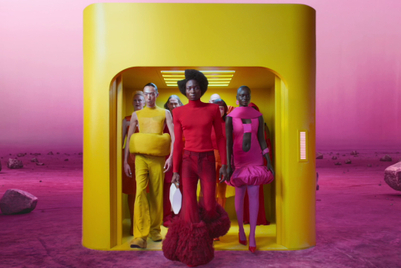
Tata and SIA are making their third attempt to launch operations in India and hoping to find success in a tough aviation market. It's a departure for an airline to choose a name in the local language and to entirely drop generic words like 'Air' and 'Jet'. In this Q&A, Meeta Malhotra of Ray+Keshavan, the agency credited with the branding, explains that choice and other aspects of the new carrier's branding.
How did the name Vistara come about?
The project started off with a brand-positioning exercise, based on extensive customer research. The research showed that passengers felt a complete loss of individuality when they entered an airport. In the current air-travel scenario, they were just 'numbers on seats'. There is a white space for a service-centric airline brand. And this was clearly the sweet spot for a brand that came from the Tatas and Singapore Airlines, both organisations that are known for their hospitality and service excellence.
The emotional imperative for the naming brief therefore was two-fold. First, express the idea that this airline will push the boundaries of air travel to create 'seamless experiences, thoughtfully delivered'. Second, make sure that the name evokes its Indian origin. Of course, there were many functional imperatives. For example, the name should be easy to pronounce across all cultures and languages and it should be available to trademark globally.
Did you have other options? What were they?
We start with a long list, then create a short list after global culture and phonetic checks. The final stage is trademark availability. Right from the beginning Vistara was everyone's first choice. So when it flew through all the checks, the teams were delighted. The other strong contender was a combination of the Tata and Singapore Airline names, but Vistara won hands down.
Vistara is derived from the sanskrit word 'vistaar', which means limitless expanse. It references its Indian origins but is a warm, lyrical word that everyone can easily pronounce. It evokes the idea of the limitless possibilities that the airline will create for its guests, partners and employees. ‘Vistaar’ is also appropriate for the image that evokes a smooth flight, enjoyable for passengers—the endless blue horizon they see from their windows.
How long did the entire branding process take?
We were commissioned in January 2014, so about six months to launch. We continue to work on the brand experience with the client.
What was the brief from Tata and Singapore Airlines?
The brief can really be summed up in three phrases. Create a brand that demonstrates global standards, Asian hospitality and Indian pride.
You are talking about two of the most sophisticated organisations in the world. The best thing about clients like that is that when they hire professionals, they let them do their jobs. The selection process was intense and rigorous, with the client checking into what each team member would bring. Once that was over, they gave us creative room to come up with a truly good solution.
How important was it to stay consistent to the Singapore Airlines branding? DId you take input from there, and if so to what extent?
 The brand positioning of 'seamless experiences, thoughtfully delivered' is based on the DNA of Singapore Airlines, which is known the world over for its service excellence. You cannot just claim this without being able to deliver it. Singapore airlines and Tatas, with their tradition of hospitality, are uniquely positioned to do so. The visual identity does not reference Singapore Airlines at all. We were free to start from scratch and do what was appropriate for Vistara.
The brand positioning of 'seamless experiences, thoughtfully delivered' is based on the DNA of Singapore Airlines, which is known the world over for its service excellence. You cannot just claim this without being able to deliver it. Singapore airlines and Tatas, with their tradition of hospitality, are uniquely positioned to do so. The visual identity does not reference Singapore Airlines at all. We were free to start from scratch and do what was appropriate for Vistara.
How will the JV promote this new branding?
Vistara was trending on Twitter minutes after it was launched. There is such an enormous groundswell of goodwill for the Tatas in India, that the brand has received overwhelming support and interest. No question that the client will be promoting the brand through marketing and advertising channels closer to the start of flight operations [expected in October], but honestly every move Vistara makes is hotly discussed. Indians feel a great emotional connect to the brand, and research shows that they see it as a symbol of Indian pride in global markets.
What lessons did you take from other airline companies?
Ask anyone in the branding industry: An airline project is the most exciting thing to work on. I don't know why but there is something magical about seeing that mark in the sky. We studied airline successes and failures. The most important learning was that we did not want to create another anonymous, functional airline brand. Think about it. So many airline brands are interchangeable. But like Singapore Airlines, we wanted to create a memorable experience where you feel like a returning guest. Instead of dreading air travel, we want you to look forward to flying Vistara.


.jpg&h=334&w=500&q=100&v=20170226&c=1)
.jpg&h=334&w=500&q=100&v=20170226&c=1)
.jpg&h=334&w=500&q=100&v=20170226&c=1)





.jpg&h=334&w=500&q=100&v=20170226&c=1)
.jpg&h=334&w=500&q=100&v=20170226&c=1)


.png&h=268&w=401&q=100&v=20170226&c=1)
.jpg&h=268&w=401&q=100&v=20170226&c=1)
.jpg&h=268&w=401&q=100&v=20170226&c=1)


